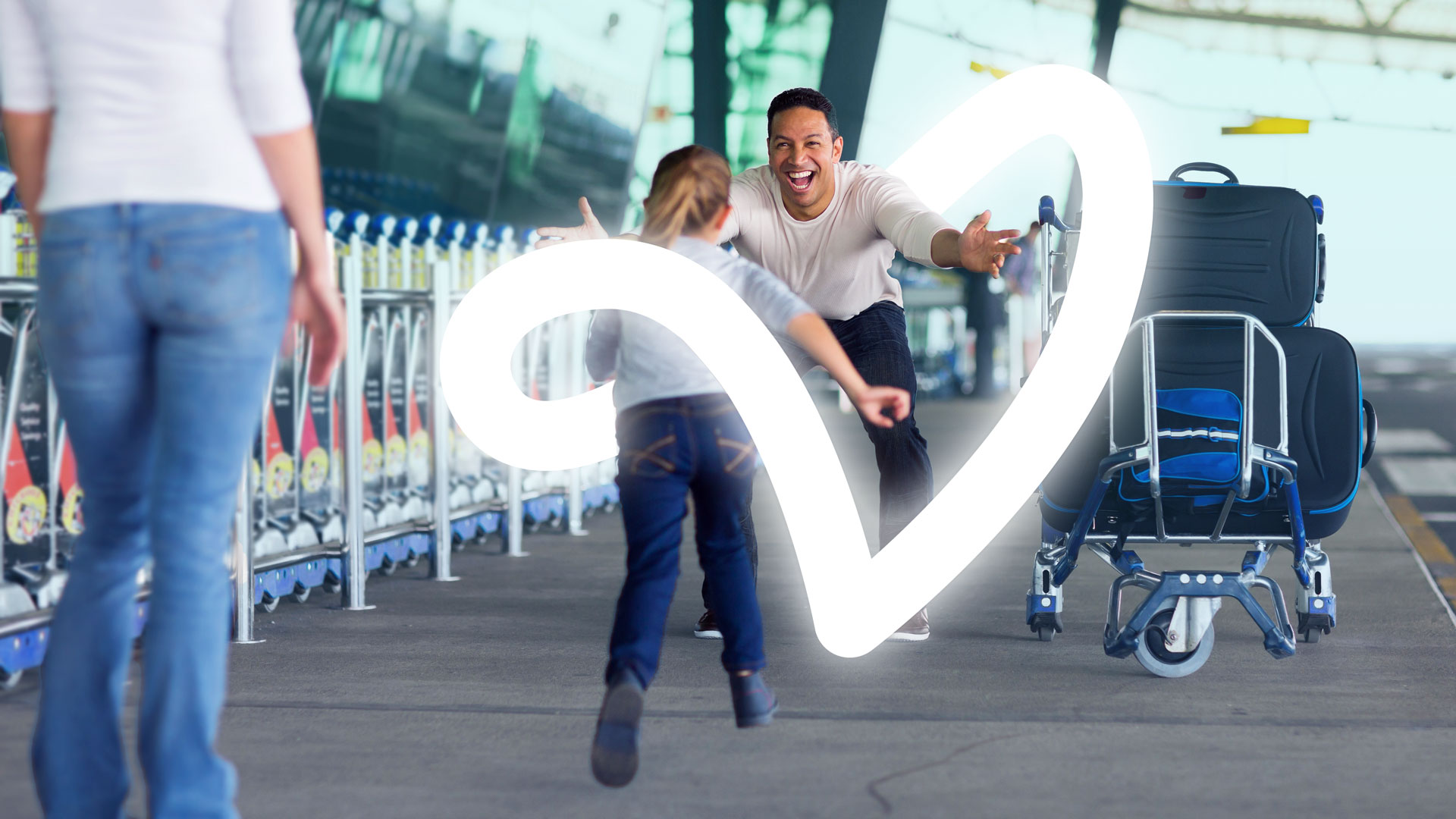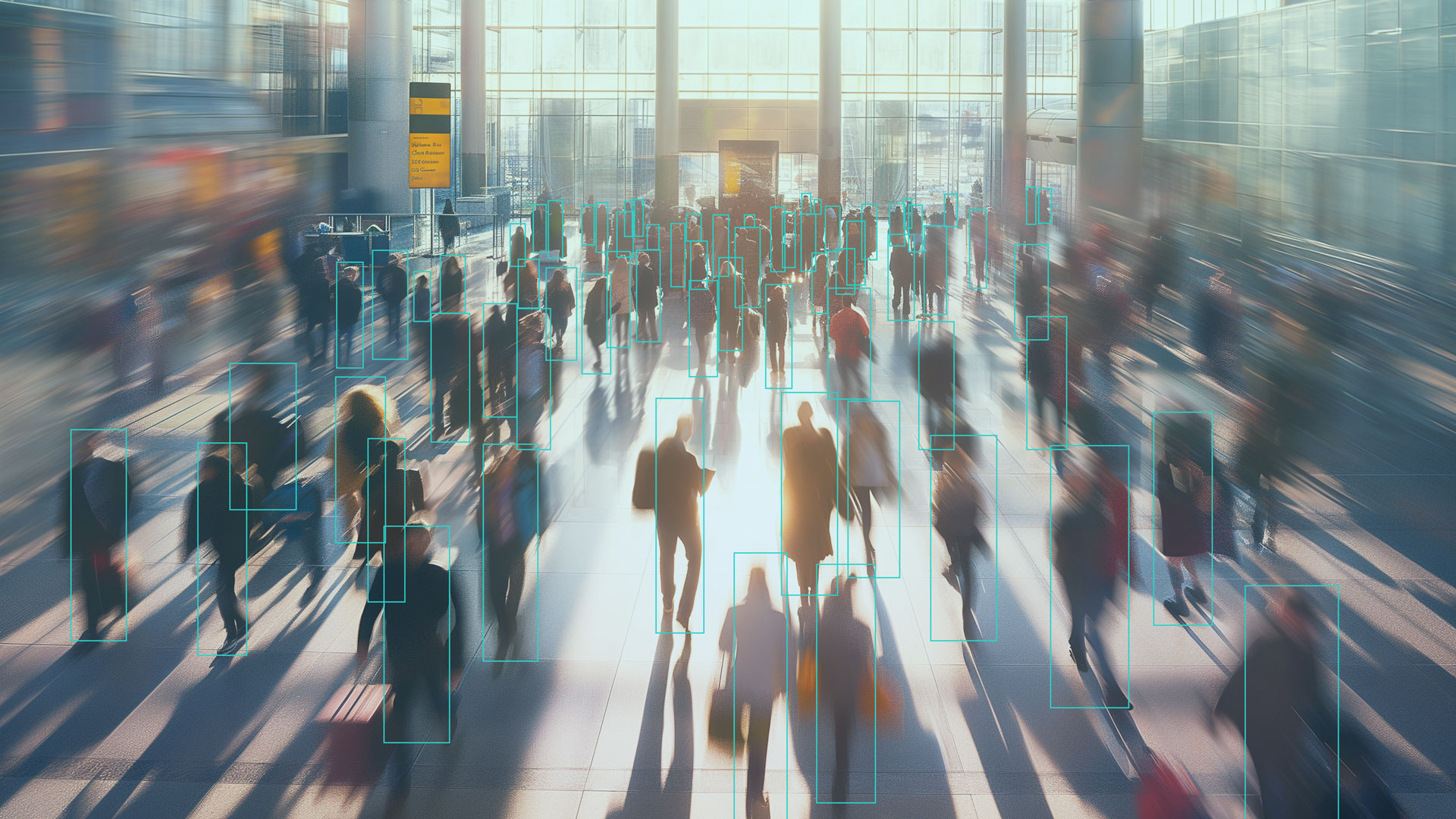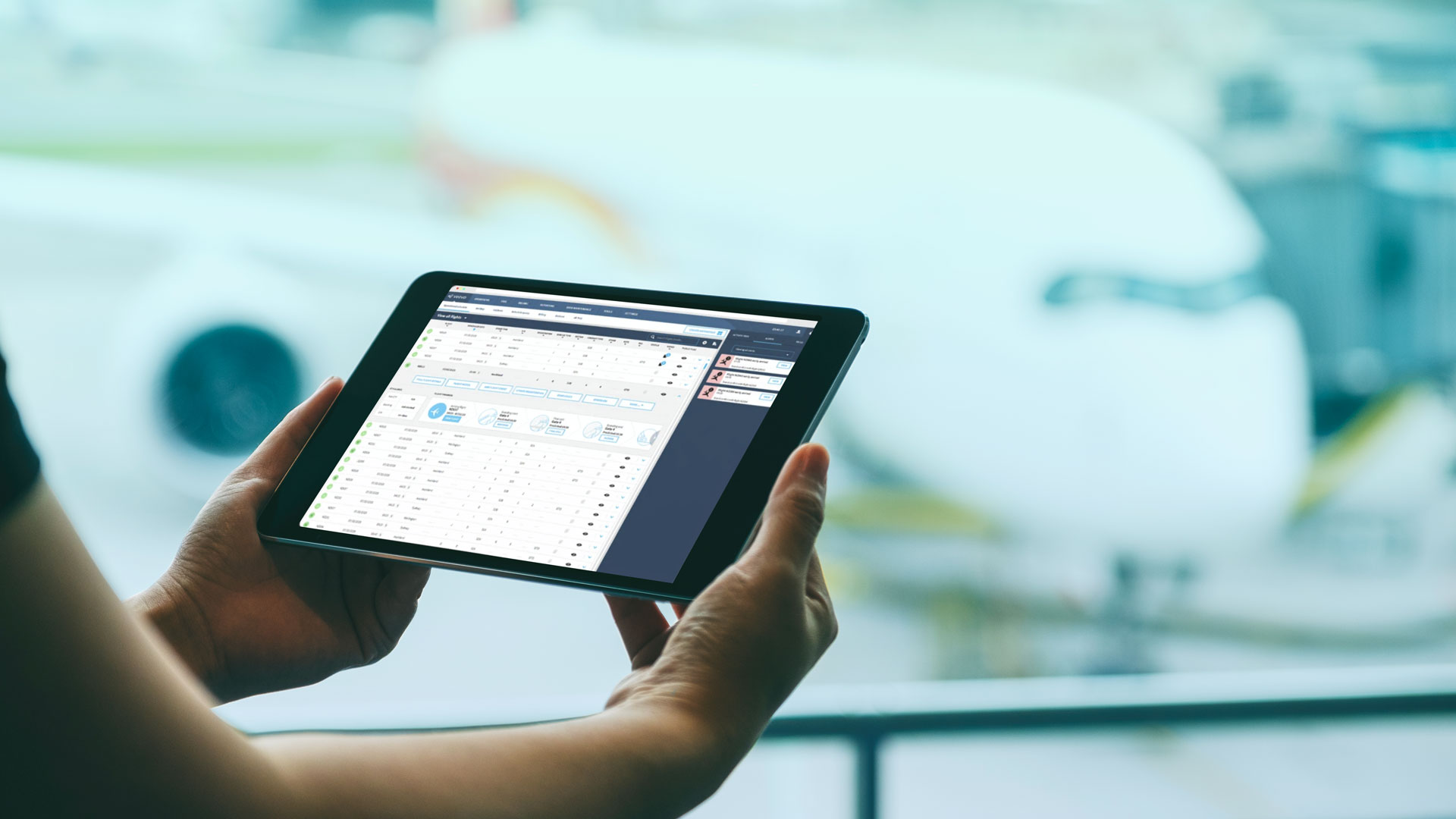At airports, every second counts—for passengers getting to their gate on time, for turnarounds and for on-time performance. At Veovo, we know people movement sensors are not just counting passengers and time—they are making time count. These sensors, and there are many different types, give us the data we need for smooth operations and happy travellers. That’s why every airport is looking at this technology right now.
The question we get most often is which type of sensor is best. Perhaps the airport already uses 3D cameras in some areas but faces challenges with that technology in other areas. Others want to understand the kerb-to-gate behaviour better or are keen to deploy new LiDAR technology.
We tell them it depends! There is no one-size-fits-all solution. The sensor that will serve an airport best is highly specific to the physical layout of the area being monitored, which can vary significantly from one terminal to another. It also depends on the nature of the metrics being measured – whether it’s wait times, broader queue metrics like divest time and lane throughput, or the entire kerb-to-gate journey.
The key is to match the right sensor to the job. Equally important is having an analytics platform that can ingest data from any sensor, new or existing, or a combination of sensors to deliver the insight needed now and handle sensor tech and airport needs evolution in the future.
Let’s take a deeper dive into the most common sensor types.
3D Optical Cameras: Enhancing Visibility and Precision
3D optical sensors use two lenses to provide overlapping images, much like human stereoscopic vision. Advanced models process these images with AI, using extensive datasets to pinpoint people’s movements with high precision. The sensors’ field of view can be expanded by combining multiple units, allowing for extensive coverage.
Best use case: 3D cameras are particularly effective in monitoring people in processing environments like security checkpoints and check-ins, where precision and privacy compliance is paramount.
What to watch out for: Both very low and very high ceilings can restrict coverage, potentially requiring a greater number of cameras and increasing the overall cost. Moreover, the architectural nuances of ceiling designs may present obstacles for mounting technology, and camera installation must be carefully considered to ensure it complements the airport’s design and does not disrupt the aesthetic. Although the cost per camera is lower than LiDAR, for example, infrastructure requirements, such as additional ethernet switches, can quickly escalate installation costs.
What to ask: Sensor specs are one thing; drill down into the software that powers the insight. How does it handle unstructured queues in places like check-in? How easy is it to stitch those outputs together for a seamless view over the entire processing area, such as security divest?
LiDAR: The Versatile sentinel
LiDAR technology has emerged as a flexible observer, capable of short and long-range movement analysis in any type of physical layout. The laser beams are turned into a 3D model of the environment, enabling it to track movement in diverse settings, from expansive terminals to complex boarding areas.
Best use cases: Like 3D Camera, LiDAR’s precision makes it a powerful sensor for any type of queue, flow and occupancy insights across a large area. The strength of LiDAR lies in its adaptability. It is particularly adept at operating in environments where other sensors might struggle, and installation points are constrained. It is most cost-efficient in areas with high or low-ceiling terminals or cluttered boarding areas. It works well in low and ambient light, making it ideal for outdoors. LiDAR’s ability to differentiate between vehicles, people and objects, while retaining full privacy and GDPR compliance, also makes it useful for kerbside people and vehicle monitoring.
What to watch out for: While the cost per metre of coverage is low, the investment cost per device is higher than that of other sensor technologies.
What to ask: Core to LiDAR’s success is the power of the 3D perception software that powers the movement analysis. Can the solution literally track individuals from start to end? And can the technology be used to identify people across much broader areas and between LiDAR sensors? With LiDAR, choosing a partner that will continue adding new capabilities to their perception software and analytic capabilities is important, e.g. detection of new object types.
CCTV and Facial Recognition: The Security Mainstay
CCTV cameras, often enhanced with facial recognition capabilities, have been the long-time mainstay of airport security. Given these are in widespread use at airports and there is a ‘sunk cost’, operators then often consider how CCTV systems could be used to understand passenger flows, count queues, and assess occupancy.
Best use case: As CCTV offers continuous surveillance and the ability to track individuals throughout the airport, it can add an additional layer of occupancy and people-counting intelligence to traditional monitoring systems.
Watch out for: While it is a potentially cheaper solution, the accuracy is not comparable to that of a system based on dedicated sensors. CCTV systems often lack comprehensive coverage, leading to the possibility of overlooking individuals in densely populated areas or when the cameras are positioned at certain angles. The feature that allows many CCTV cameras to adjust their viewing angle implies that data capture is contingent on the cameras being set to their standard orientation. If the cameras are being manually operated, they may not record usable data because they are not calibrated to recognise what they are observing. Additionally, these systems could pose privacy risks if the data collected is not anonymous before processing.
What to ask: If you are considering CCTV to supplement your crowd and queue management system, how does the system handle non-fixed cameras? Can the solution re-identify individuals from camera to camera on a scale? If so, what is the percentage of passengers who are re-identified correctly when the population is high? Image processing in real-time for hundreds of cameras requires a lot of resources, both on the server and network side. What are the running costs for analysing the video feeds? Also, remember that image processing is only one piece of the queue management solutions.
While Veovo doesn’t do image processing, we are able to ingest metrics from image processing systems as part of a sensor-agnostic queue and flow analytics system.
Wi-Fi and Bluetooth-Based Tracking: The full journey experts
Wi-Fi and Bluetooth-based tracking systems excel in capturing the digital footprint of the airport. They detect electronic devices to provide insights into passenger flow and density, offering a macro-level view of traffic patterns:
Wi-Fi and Bluetooth-based tracking technologies detect electronic devices, offering insights into the flow and density of people within the airport. They can also re-identify devices, providing data on repeat visits and movement patterns. However, the accuracy of Wi-Fi-only systems can be affected by MAC address randomisation and the presence of multiple devices.
Best use cases: These technologies are particularly useful for analysing the full passenger journey, measuring and predicting wait times in long corridors, extended lines, and less complex queuing scenarios. BLE provides low-cost and accurate metrics across the entire terminal, including kerb-to-gate profile analysis by flight for better planning and retail flow analysis. These can also be combined with people counter technology for a low-cost approach to understanding restroom usage, occupancy and footprint in retail zones.
What to watch out for: Wi-Fi-only solutions from many vendors struggle with coverage gaps and may face accuracy challenges due to technical variables such as MAC address randomisation.
What to ask: How does your vendor ensure data compliance and anonymisation? Can they handle MAC address randomisation to ensure full journey analysis? What percent of the passengers are tracked from Flight?
The Veovo team has used our decades of experience to develop a system that combines BLE data with Wi-Fi. This system is then scaled using boarding pass scans and/or counter/ camera or LiDAR data to provide more than 90% confidence in flow analysis.
Turning sensor data into smart decisions
Airports know that data is the fuel for smarter, smoother operations.
At Veovo, we know that while sensors tally up the numbers, it’s our analytics software that turns those figures into smart decisions. Our platform is all about flexibility, digesting data from any sensor—LiDAR, BLE, cameras, even the ones from other vendors that you already have—to track everything that matters, from how many people and vehicles are in a space to how long they stay there and how they move between spaces.
Our approach’s crux lies in tracking passengers from kerb to flight, not merely by compiling median or average area statistics. Without connecting passenger data to specific flights, it becomes impossible to correlate it with operational data, as there would be no common denominator. This capability enables us to make impactful decisions, such as synchronising flight schedules with retail spending opportunities, managing lounge capacity to keep things comfortable and opening just the right number of security lanes to balance cost and experiences. It’s about keeping the day running smoothly and grounding every decision in solid data.
The future of tracking passenger movement at airports is not about betting on one type of sensor. It’s about creating a tailored system that uses the best technology for the use case, layout, and budget. It’s smart and strategic, and it’s all about making work smarter and experiences smoother.


